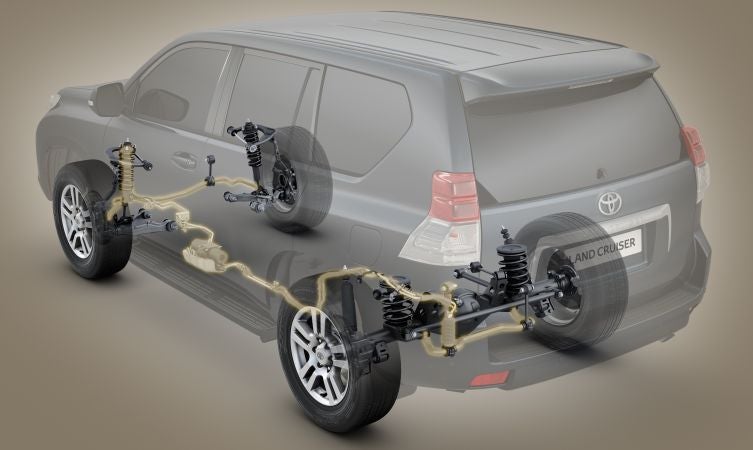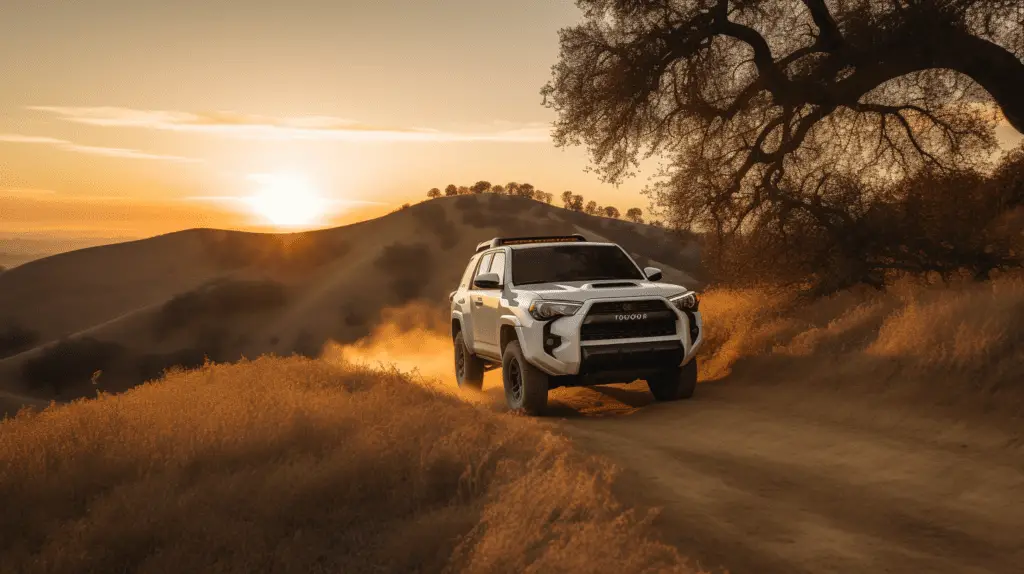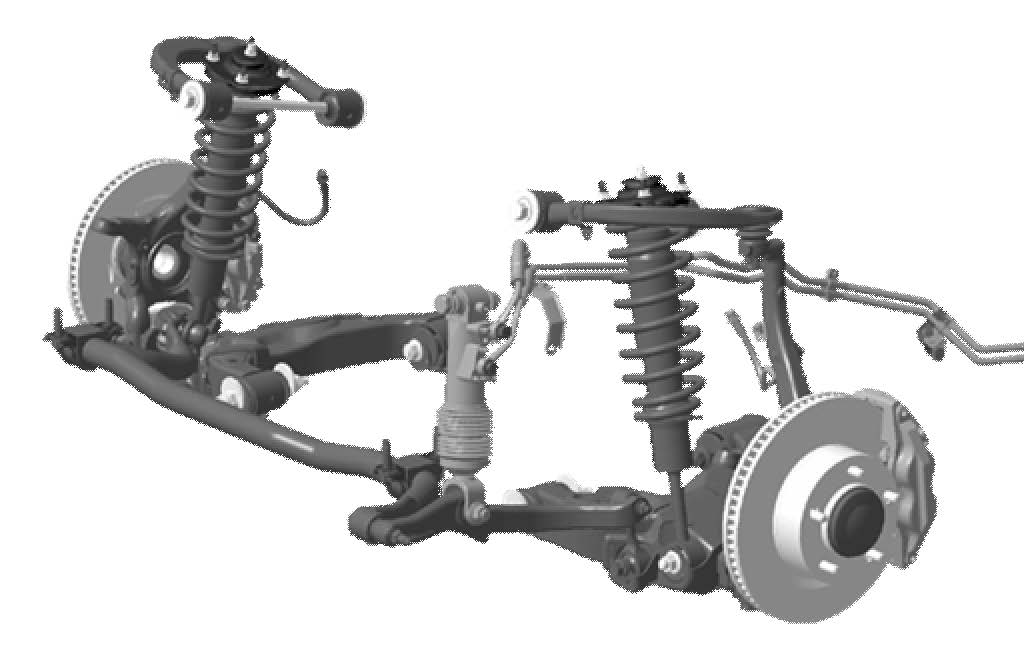Navigating The Terrain: Understanding The Toyota 4Runner’s Kinetic Dynamic Suspension System (KDSS)
Navigating the Terrain: Understanding the Toyota 4Runner’s Kinetic Dynamic Suspension System (KDSS)
Related Articles: Navigating the Terrain: Understanding the Toyota 4Runner’s Kinetic Dynamic Suspension System (KDSS)
Introduction
With enthusiasm, let’s navigate through the intriguing topic related to Navigating the Terrain: Understanding the Toyota 4Runner’s Kinetic Dynamic Suspension System (KDSS). Let’s weave interesting information and offer fresh perspectives to the readers.
Table of Content
Navigating the Terrain: Understanding the Toyota 4Runner’s Kinetic Dynamic Suspension System (KDSS)

The Toyota 4Runner, a rugged and capable SUV, has consistently attracted enthusiasts seeking adventure and off-road prowess. One key feature that significantly impacts the 4Runner’s handling and off-road capabilities is the Kinetic Dynamic Suspension System (KDSS). While not present in all 4Runner models, KDSS offers a notable advantage for those seeking enhanced stability and control on varied terrain.
The Essence of KDSS: Enhancing Stability and Control
KDSS is an electronically controlled suspension system designed to improve vehicle stability and handling by actively adjusting the suspension stiffness. It achieves this through a hydraulic system that connects the front and rear stabilizer bars. By dynamically controlling the stabilizer bar stiffness, KDSS effectively reduces body roll during cornering and improves overall handling, particularly on uneven surfaces.
How KDSS Works: A Technical Overview
At the core of KDSS lies a hydraulic system that utilizes a series of valves, actuators, and sensors. When the vehicle encounters a corner or uneven terrain, the sensors detect body roll and activate the hydraulic system. The system then adjusts the stiffness of the stabilizer bars by diverting hydraulic fluid between the front and rear bars.
- Increased Stiffness: When the vehicle leans into a corner, KDSS increases the stiffness of the stabilizer bars, effectively reducing body roll and improving handling. This allows the vehicle to maintain a stable and controlled posture even when navigating sharp turns or uneven terrain.
- Reduced Stiffness: On off-road terrain, KDSS reduces the stiffness of the stabilizer bars, allowing the wheels to articulate independently. This improved articulation enhances traction and ground clearance, enabling the 4Runner to navigate challenging obstacles with ease.
Benefits of KDSS: A Comprehensive Perspective
The integration of KDSS in the Toyota 4Runner offers several distinct advantages:
- Improved Handling: KDSS significantly enhances the 4Runner’s handling, particularly during cornering. The reduced body roll provides a more stable and confident driving experience, regardless of road conditions.
- Enhanced Off-Road Capability: By allowing the wheels to articulate independently, KDSS improves the 4Runner’s off-road performance. The increased ground clearance and traction contribute to a smoother and more controlled ride on uneven terrain.
- Increased Comfort: KDSS not only improves handling and off-road capability but also enhances ride comfort. The system’s ability to adjust suspension stiffness helps absorb bumps and dips, resulting in a more comfortable ride for passengers.
- Improved Safety: By minimizing body roll and enhancing stability, KDSS contributes to a safer driving experience. The system’s ability to maintain control during challenging maneuvers reduces the risk of accidents.
KDSS in the Toyota 4Runner: A Model-Specific Breakdown
KDSS is not a standard feature across all Toyota 4Runner models. Its availability varies depending on the model year and trim level.
- 2010-2013: KDSS was introduced as an option on the 4Runner Limited and Trail models.
- 2014-2019: KDSS remained an optional feature on the Limited and Trail models, while it became standard on the TRD Pro trim.
- 2020-Present: KDSS continues to be standard on the TRD Pro and optional on the Limited and Trail models.
Understanding the Differences: KDSS vs. Non-KDSS 4Runners
The presence or absence of KDSS significantly impacts the 4Runner’s performance and handling characteristics.
- Non-KDSS 4Runners: These models offer a more traditional suspension setup, providing a comfortable ride on paved roads but potentially experiencing more body roll during cornering and less articulation off-road.
- KDSS 4Runners: These models benefit from the enhanced stability and control offered by KDSS, resulting in a more confident driving experience on both paved and unpaved roads.
Frequently Asked Questions (FAQs)
1. Is KDSS a must-have feature for all 4Runner owners?
KDSS is a valuable feature for those who prioritize handling, off-road capability, and overall driving experience. However, it is not a necessity for all 4Runner owners. If your primary focus is on comfortable on-road driving, a non-KDSS 4Runner might suffice.
2. Does KDSS affect the 4Runner’s fuel economy?
While KDSS uses hydraulic fluid and requires energy to operate, its impact on fuel economy is generally negligible. The benefits of improved handling and off-road capability often outweigh any potential fuel consumption increase.
3. Can KDSS be added to a 4Runner that did not come with it?
Adding KDSS to a 4Runner that was not originally equipped with it is not a straightforward process. It involves significant modifications, including replacing suspension components and integrating the hydraulic system. This is a complex and potentially expensive undertaking.
4. What are the maintenance requirements for KDSS?
KDSS requires regular maintenance, similar to other suspension components. It is essential to have the system inspected and serviced according to the manufacturer’s recommendations to ensure its proper functioning.
Tips for Owning a KDSS-Equipped 4Runner
- Regular Maintenance: Ensure regular inspections and servicing of the KDSS system to maintain its optimal performance and prevent potential issues.
- Proper Tire Inflation: Maintaining the correct tire pressure is crucial for proper KDSS functionality. Underinflated tires can affect the system’s performance and handling.
- Off-Road Driving: When driving off-road, be mindful of the KDSS system’s capabilities and limitations. Avoid excessive strain on the system by navigating obstacles with caution.
Conclusion
The Toyota 4Runner’s Kinetic Dynamic Suspension System (KDSS) is a valuable feature that enhances handling, off-road capability, and overall driving experience. While not available in all 4Runner models, KDSS offers a significant advantage for those seeking a more stable and controlled ride on both paved and unpaved roads. By understanding the benefits and considerations associated with KDSS, potential 4Runner buyers can make an informed decision about whether this feature aligns with their needs and driving preferences.








Closure
Thus, we hope this article has provided valuable insights into Navigating the Terrain: Understanding the Toyota 4Runner’s Kinetic Dynamic Suspension System (KDSS). We appreciate your attention to our article. See you in our next article!
You may also like
Recent Posts
- The 2025 Toyota 4Runner: A Legacy Reimagined
- The Enduring Appeal Of The Toyota 4Runner Manual Transmission 4×4
- The Toyota 4Runner TRD Off-Road: A Legacy Of Adventure, Reimagined For 2025
- The Anticipation Builds: Unveiling The Next Generation Toyota 4Runner
- The 2025 Toyota 4Runner TRD: A Legacy Of Adventure Reimagined
- The Future Of Color: Exploring The Significance Of Color Trends
- The Toyota 4Runner: A Legacy Of Capability, Now With Expanded Seating
- The Toyota 4Runner Timing Belt: A Vital Component For Engine Longevity
Leave a Reply